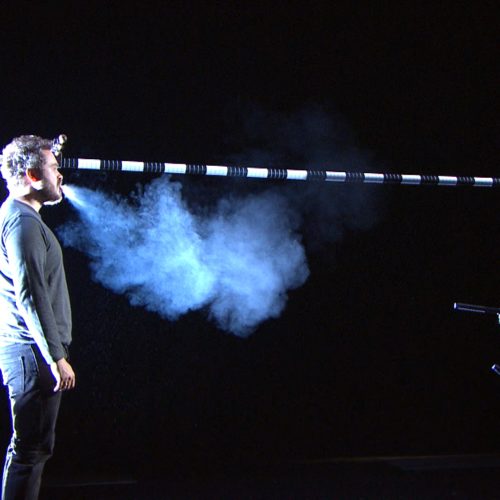Munich study cuts Covid distance for winds
mainAccording to this latest study, 1.5 metres is all you need in the woodwinds.
Results of BR Symphony Orchestra aerosol study
Scientists at the LMU Clinic in Munich and UK Erlangen investigated the spread of aerosols when playing the trumpet, flute and clarinet
Following the study results on the risk of corona infection when singing with singers from the Bavarian Radio Choir, further results are now available from this extensive study by the LMU Clinic in Munich, the University Hospital Erlangen and the Bavarian Broadcasting Corporation. The further evaluation of the data concerned the spread of aerosol – and thus the possible transmission of viruses – when playing wind instruments, which was examined with members of the BR Symphony Orchestra. According to the results, the distances in the orchestra, at least to the side, could be smaller than is currently recommended. The research was funded by the Bavarian State Ministry for Science and Art.
State Minister Bernd Sibler emphasized: “One of my central tasks as Minister of Art is to make culture possible. In times of the pandemic, protecting the health of musicians and the public is particularly important. The better we know about the corona virus, the more targeted we can take measures for safe music-making. As Minister of Science, I therefore support the work of our scientists with full conviction. It is fundamental to being able to make responsible decisions. Many thanks to everyone who contributed to this study and thus provide perspectives for possible openings . “
Visualization of aerosol clouds through the substance of e-cigarettes
In contrast to studies that measured the absolute aerosol concentration through playing music, the approach of this study was to determine the acute spread and distribution of aerosols in the room through the playing of certain wind instruments. Prof. Dr. Matthias Echternach, Head of the Phoniatrics and Pediatric Audiology Department at the Department of Otolaryngology and Polyclinic for Otorhinolaryngology at the LMU Munich Clinic, and PD Dr. Stefan Kniesburges, fluid mechanic in phoniatrics and pediatric audiology at the ENT clinic at the University Hospital Erlangen (FAU), set up a test setup in Studio 2 at the BR location Unterföhring in which aerosols that were inhaled through the basic substance of e-cigarettes are in their spread when playing wind instruments could be observed and measured.
Recommended distances to the front and to the side
The evaluation of the measurements via the radiated aerosol clouds showed that the musicians should keep a greater distance from their colleagues in front than to the side. Always provided that the room is permanently ventilated and that the aerosols are regularly removed with fresh air. “The measured wind instruments differ in their radiation characteristics towards the front. For the trumpet and the clarinet, we measured an average distance of 0.9 meters from the cloud to the mouth. However, a few musicians also achieved widths of 1.5 meters, so safety distances of 2 metres are recommended. With the flute, however, the measured pulse radiation to the front via the mouthpiece even reached widths of up to 2 meters. Therefore, safety distances of 2 meters are to be assessed as too small and 3 meters as appropriate. The radiation to the side remained under one meter for all musicians. ‘A safety distance of 1.5 meters seems to be sufficient, in contrast to the previously recommended 2 meters,’ says Matthias Echternach.
‘However, the data only refer to the direct propagation through the own impulse when playing. For the safety of the musicians, however, it is important that the aerosols are permanently removed from the room so that they do not accumulate’, adds Stefan Kniesburges . How far aerosols can be removed under real stage and rehearsal conditions is not yet well understood in the opinion of the study directors. ‘With regard to the real rehearsal and performance conditions for making music, further studies are necessary in order to examine additional measures with regard to their potential for risk reduction and their acoustic effects.’
Larger concert repertoire possible again by reducing the distances
‘This extremely thorough study provides important information about safe distances between musicians on stage. We hope that your findings will be quickly incorporated into the requirements of decision-makers,’ says Nikolaus Pont, manager of the BR Symphony Orchestra. ‘Just the reduction of the lateral distances between the wind instruments would enable us to perform a much larger repertoire again.’
Christopher Corbett, principal clarinetist at the BRSO, adds: ‘For us musicians it is a basic requirement that we hear each other well in order to be able to make music. It would be enormously helpful if the distances within a vocal group in a row could be reduced The musical and emotional communication with colleagues would be easier again, and it becomes audible.’







Comments